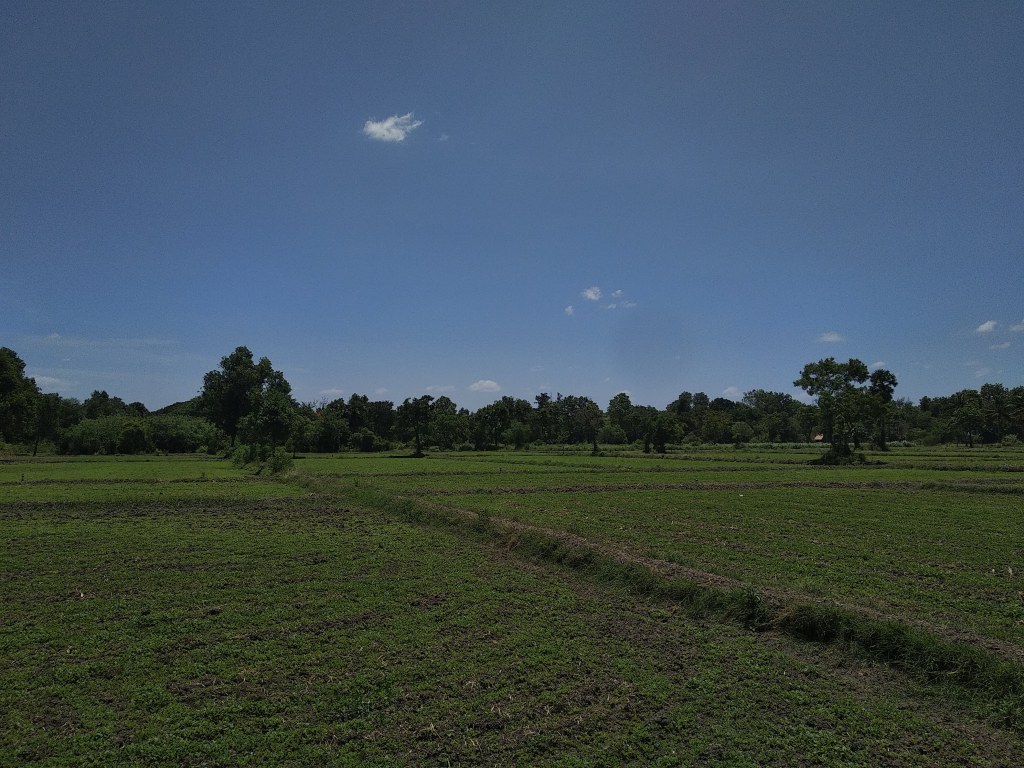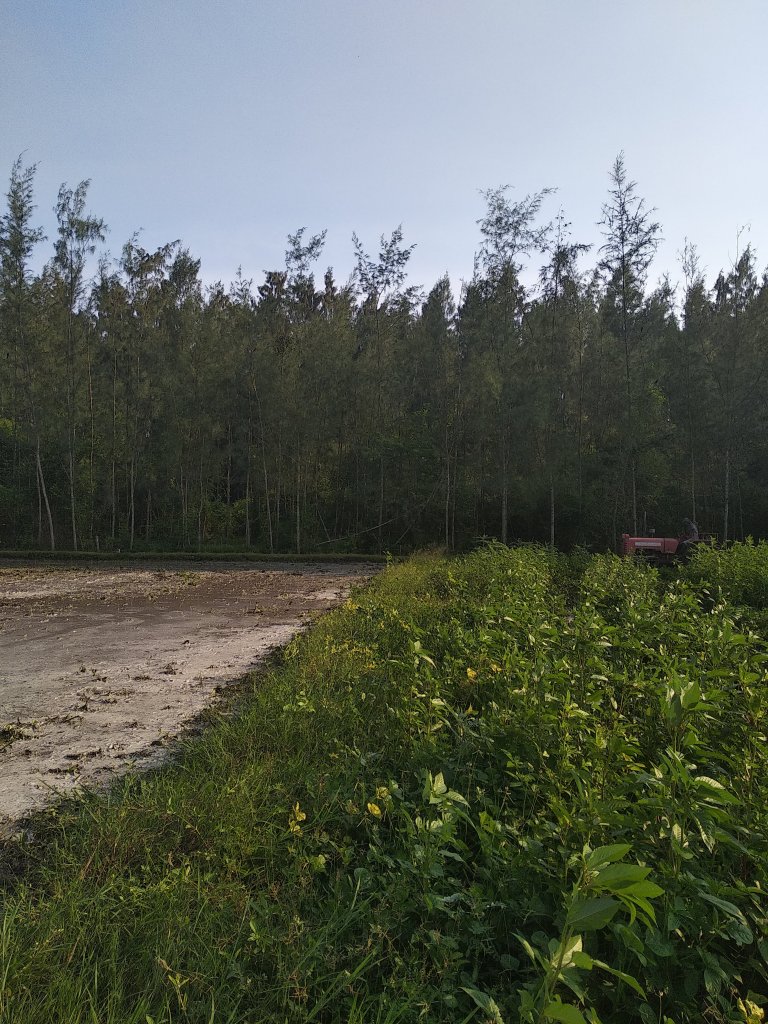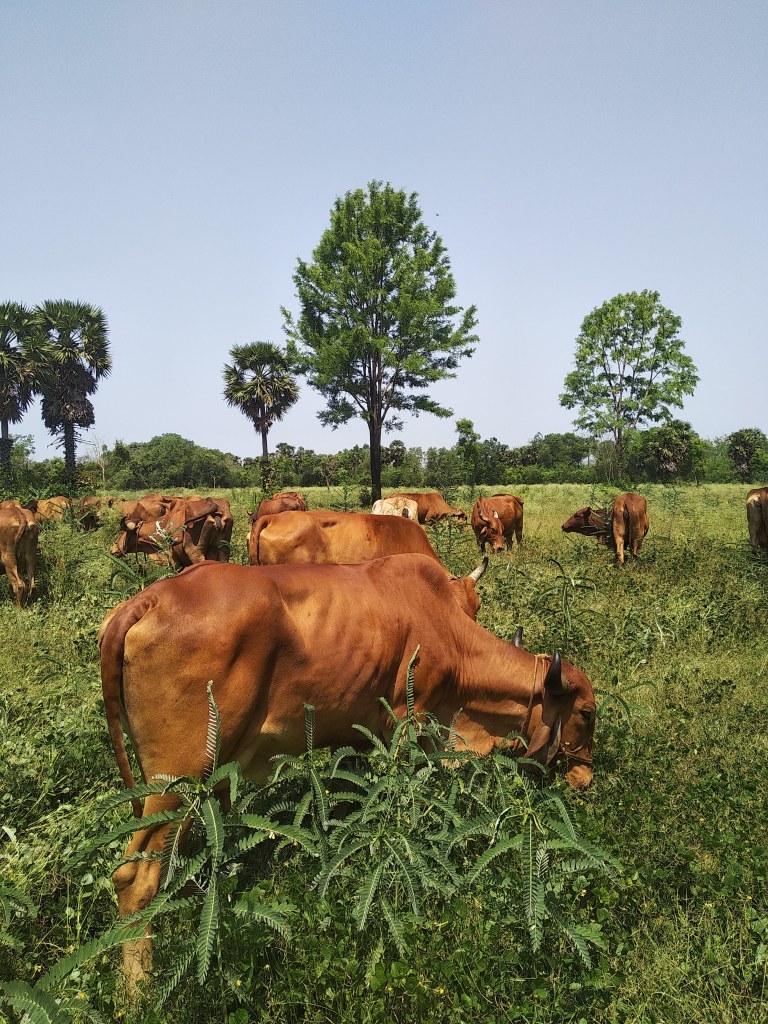Irrigated salad bars/green manure are relatively easy depending on the monsoon each year. At Annapurna, we receive an ample monsoon (summer and winter) and sometimes, even a cyclone at times. As a result, rain water harvest ponds have more capacity to sustain the rice, orchards, and fodder, because of which we sow early harvested paddy fields to raise an irrigated salad bar. Green manures such as Phaslous Tribola and Sesbania Speciosa, (dryland specials) establish robust overgrowing of the weeds under irrigated conditions.
The CO43 paddy harvested early in January and the Annapurna paddy fields stretching up to 7.7 of the total 20 acres, raised with early green manure and irrigated since the good monsoon last season, serve as a grazing ground for the dairy during the dry season. Cows spend an hour grazing in a rice plot and get daily rotated into another field. The idea is to irrigate the fields enough to establish the crop, graze the cattle swiftly, and allow green manure to bounce back up with the irregular summer showers to plow it back in for paddy preparation. The remaining paddy fields are grown and managed as the dryland salad bar for the dairy and green manure for the paddy. Productivity of these plots varies from year to year depending very much on the summer monsoon rains.
In an exact opposite scenario, we rely on the summer rain to germinate the green manure. In such instances, we look at rain predictions and then sow the green manure. Some years it rains several centimeters high, which can replicate the same result as when we rely on the irrigated system. This year, however, the rains were short and scattered.
This brings us the first heavy flush of weeds, predominantly the Trianthema decandra L, which is locally known as spinach and is edible for cattle in regulated quantities. Under the lush short canopies of this weed, we have our green manures germinated. It remains dormant without ample sun and moisture and waits for the weeds to wither out after its 45-day life cycle. This grown sea of this dominant weed also falls prey to caterpillars (moth species unidentified) and gets eaten away making way for the sunlight to reach the ground and the dormant green manure finally synthesizes back to life.











